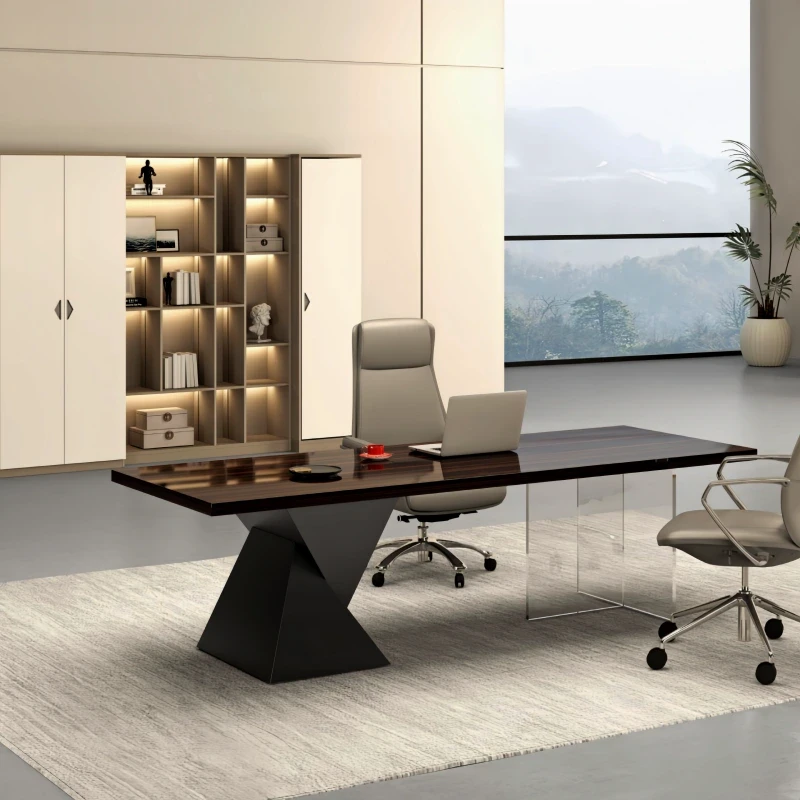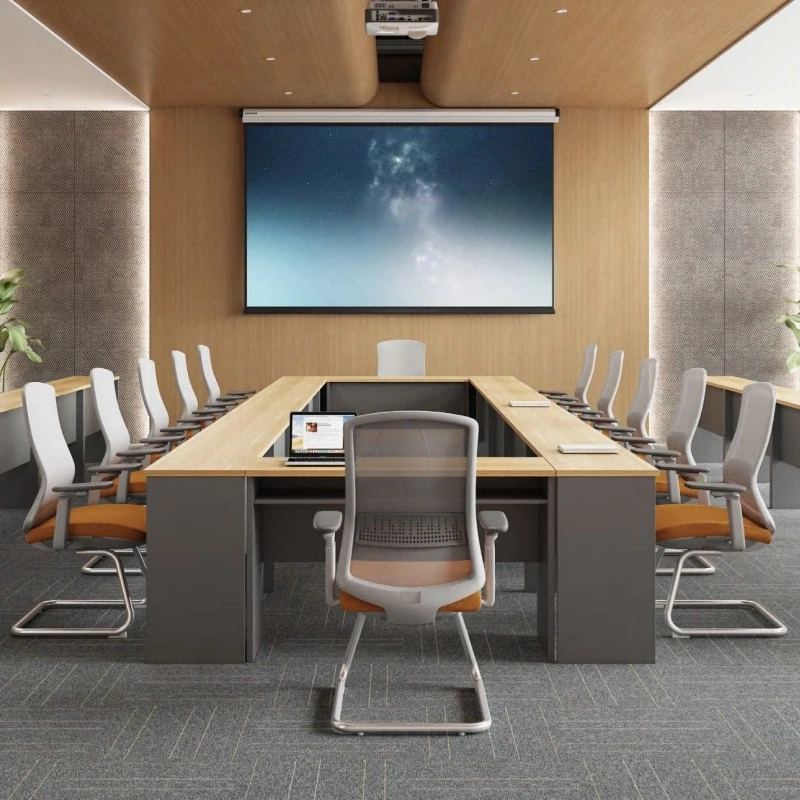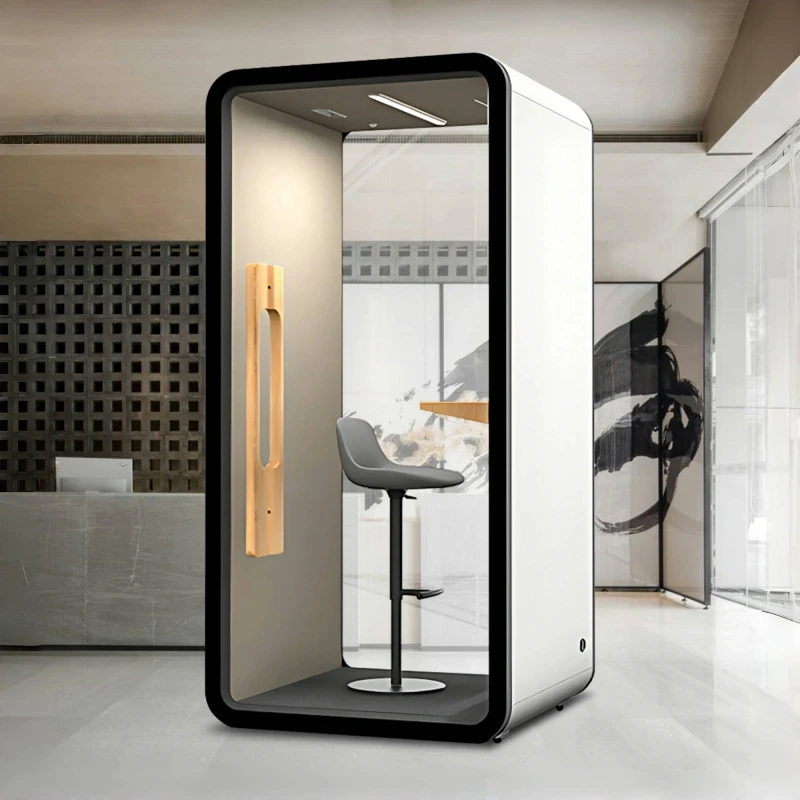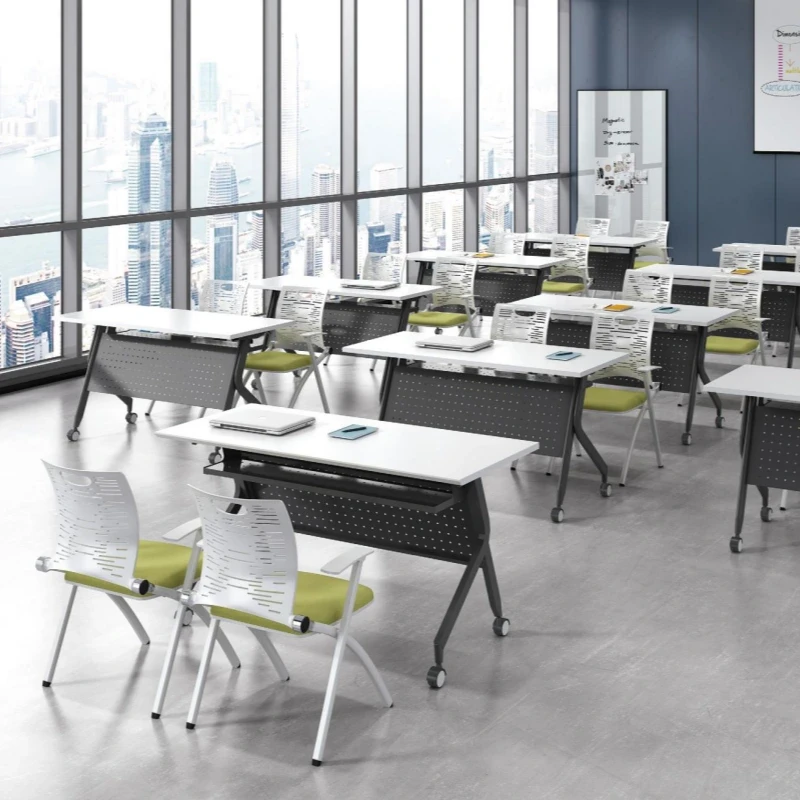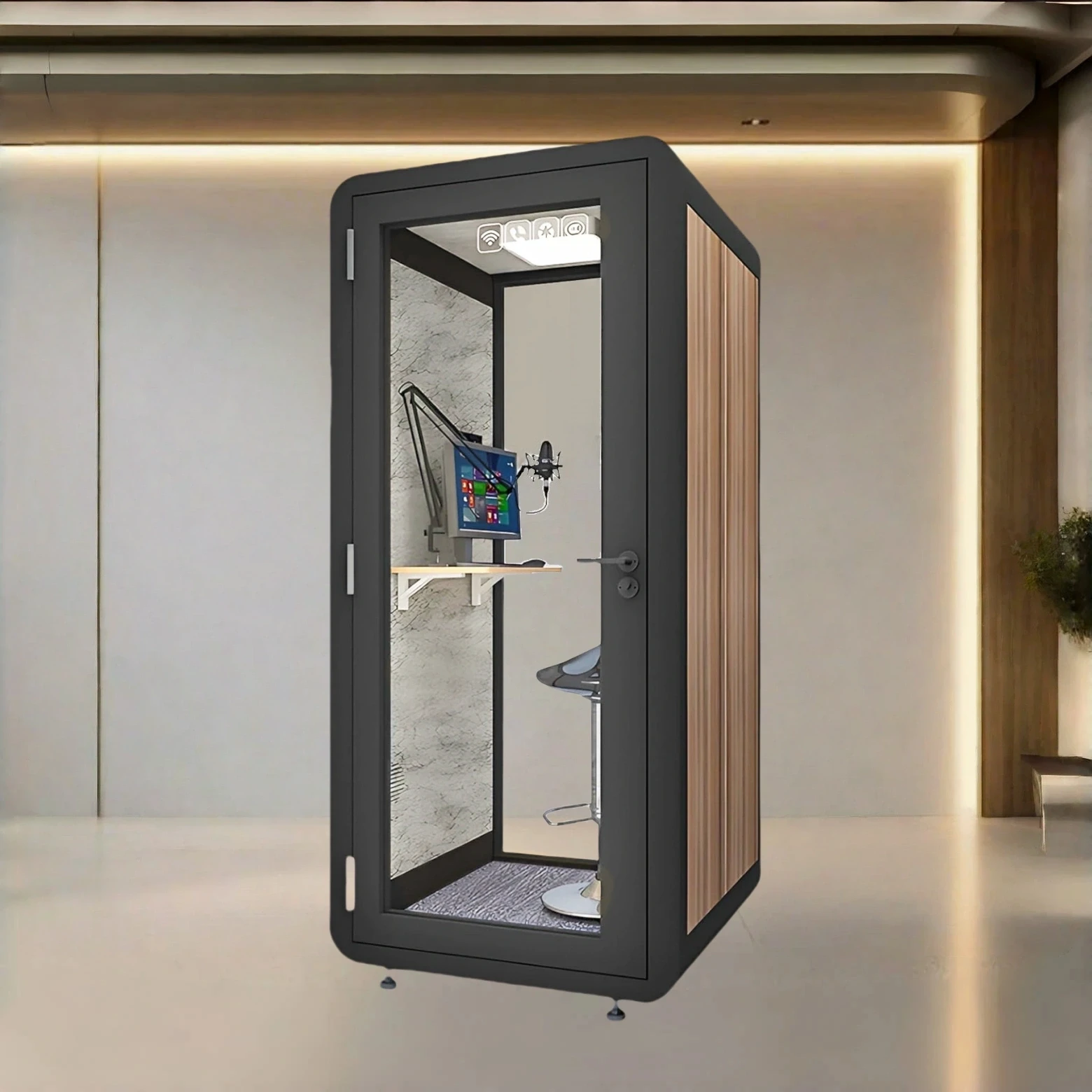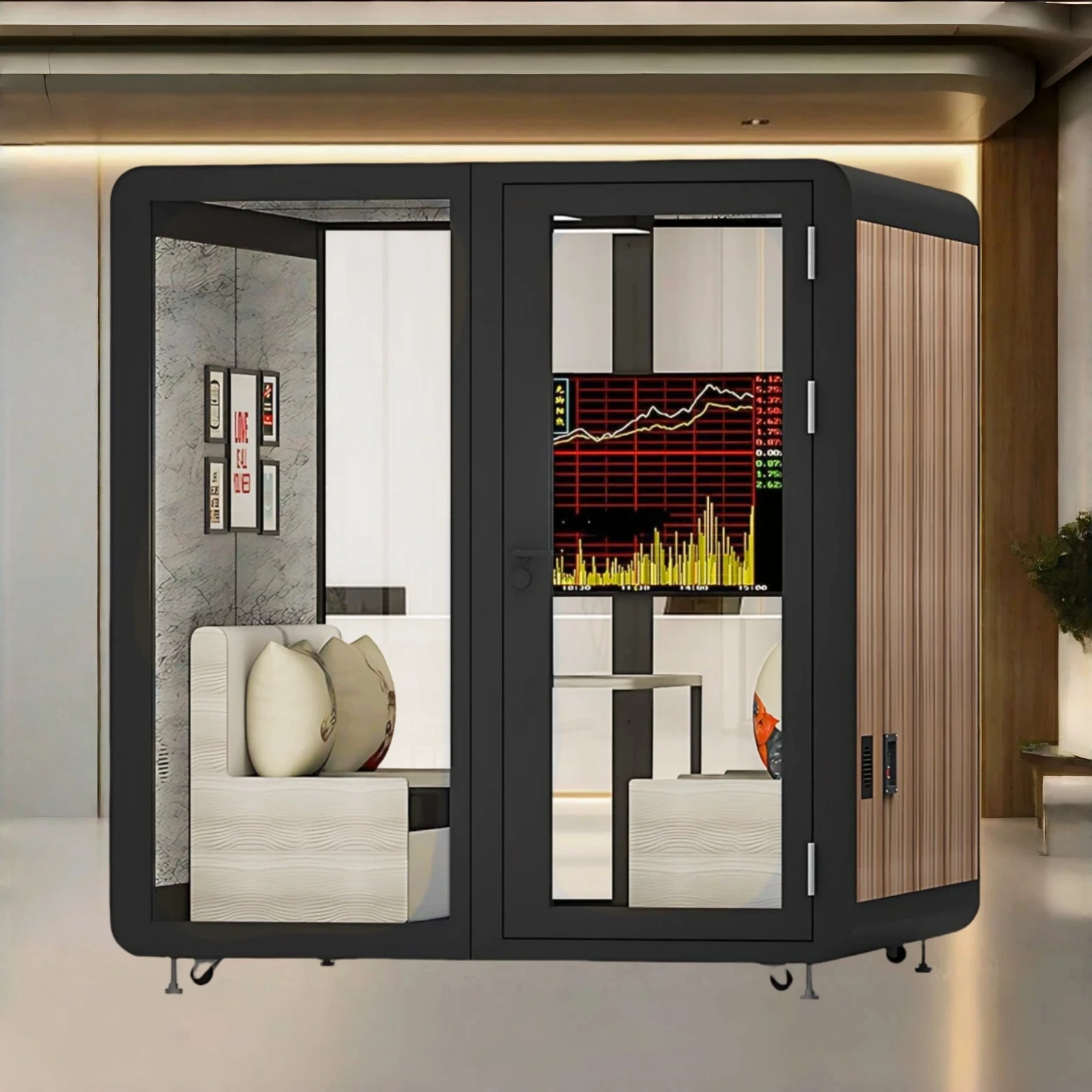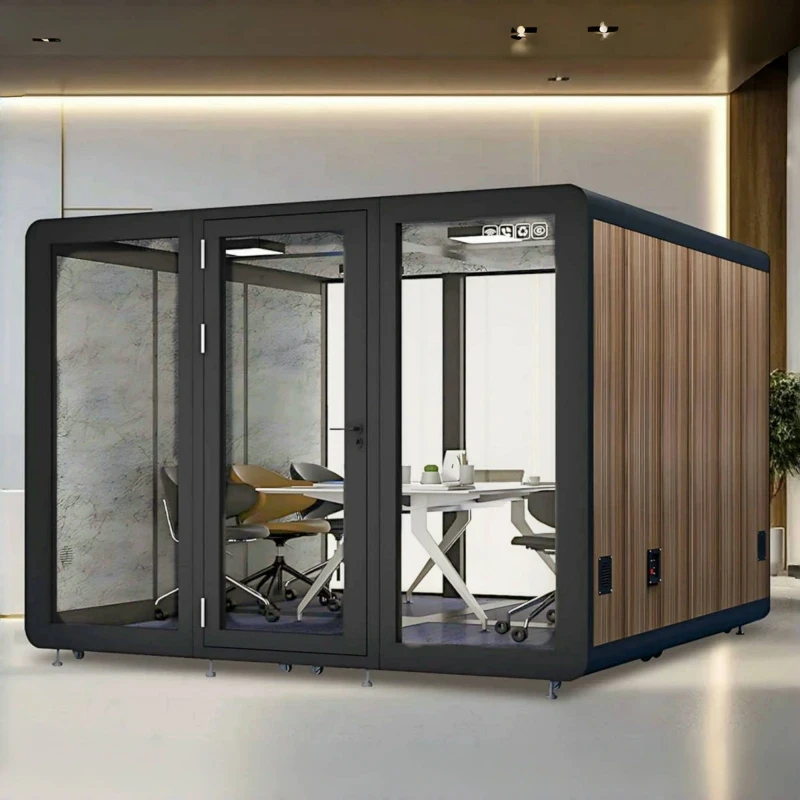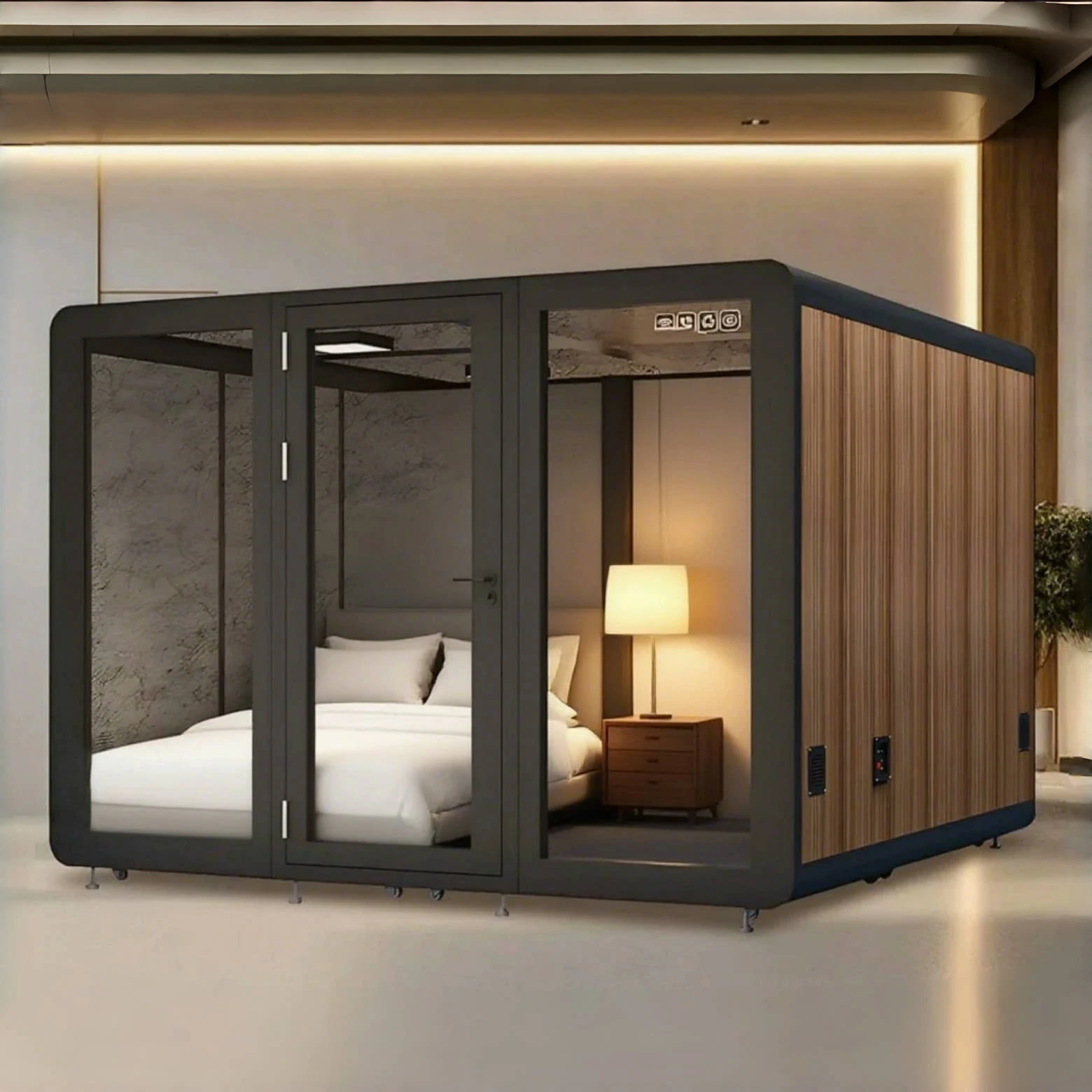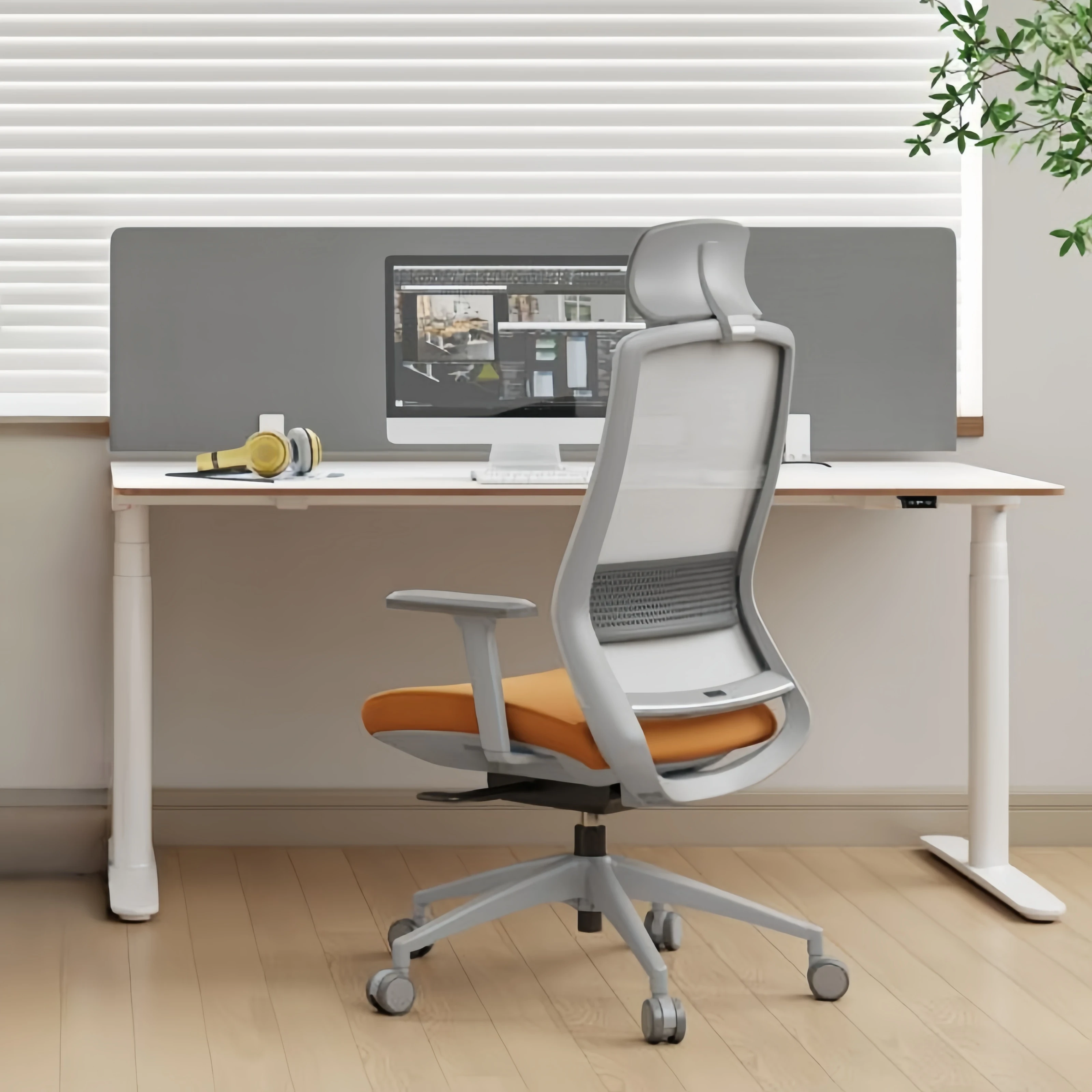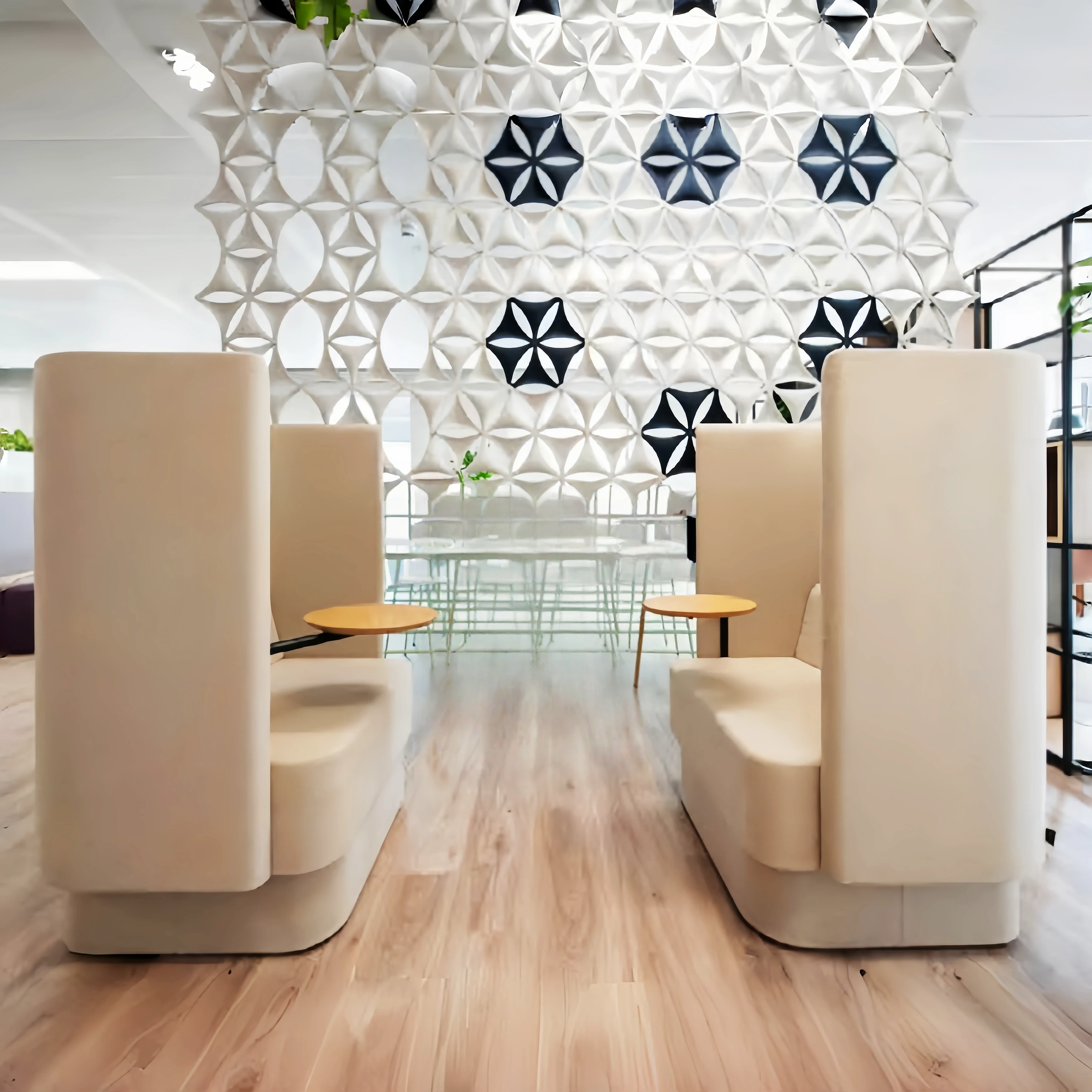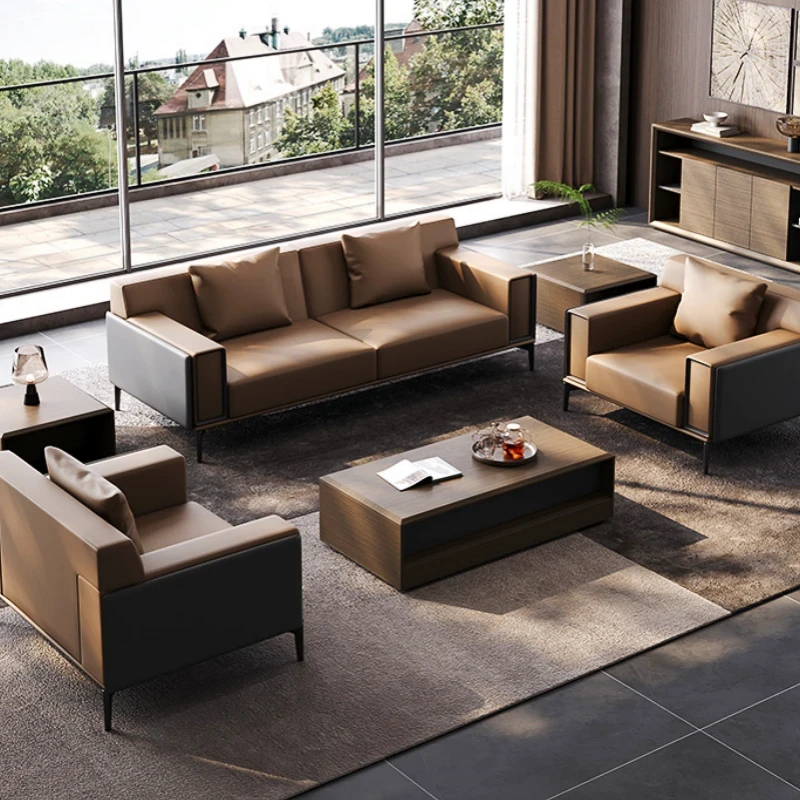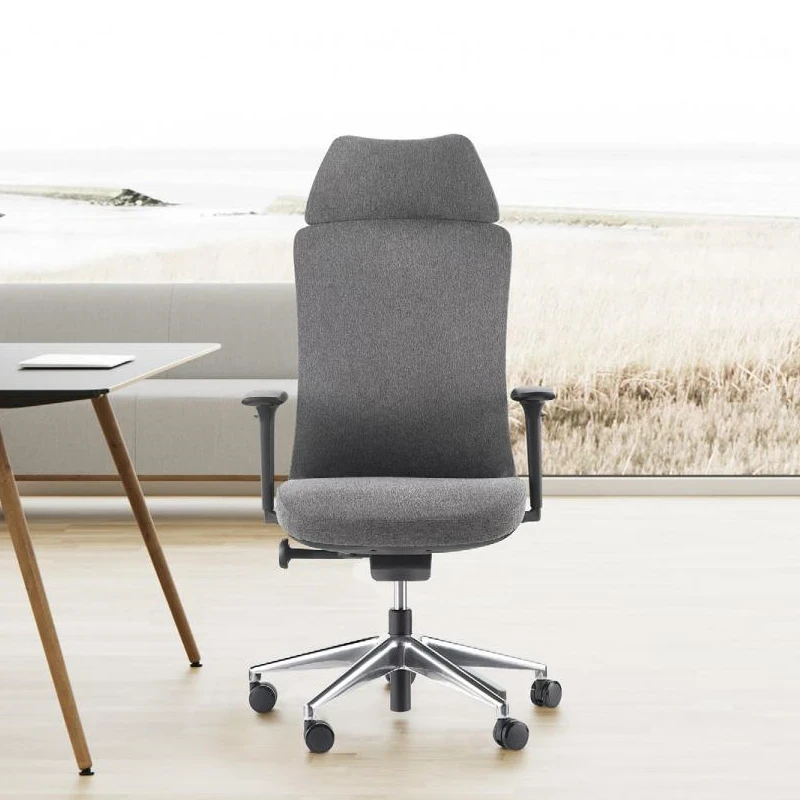Against the backdrop of rapid global economic development and technological advancement, the design of modern office furniture has become a key factor in shaping the work environment and meeting workplace needs. This study focuses on innovations in office furniture design, exploring how simplicity, modularity, and ergonomics can be integrated into modern office furniture to accommodate flexible and diverse work styles and enhance employee well-being. We analyze in detail how design trends influence the functionality and aesthetics of office furniture and how these trends respond to evolving market demands and consumer preferences. The results demonstrate that design optimization not only improves work efficiency and comfort but also enhances the sustainability and adaptability of furniture. Through in-depth case studies and market feedback, this article provides designers, manufacturers, and corporate decision-makers with strategies and insights on how to leverage design innovation to optimize office furniture selection and marketing.
1. Characteristics of Modern Office Furniture Design
1.1. Research Background
Amidst the rapid development of globalization and digitalization, the transformation of the office environment is profoundly impacting corporate productivity and employee work experience. With technological advancements and changes in work styles, more and more companies are recognizing the importance of office space for employee health and productivity. This trend is driving office furniture design towards a more user-friendly and environmentally friendly approach. Especially with growing environmental awareness, green supply chain management and sustainable design concepts are becoming mainstream in the office furniture industry.
1.2. Research Purpose
This study aims to explore the characteristics of modern office furniture design and, through field research, analyze the changing trends in current market demand. This paper aims to provide companies and designers with a reference for future office furniture development through an in-depth analysis of the design concepts, functions, and user needs of existing office furniture, thereby helping to optimize the office environment and promote sustainable development in the face of fierce market competition.
1.3. Design Concepts for Modern Office Spaces
Office furniture, including conference tables, negotiation tables, manager desks, employee desks, office partitions, and filing cabinets, forms the foundation of the office environment. With the advancement of society and the economy, traditional cubicles are no longer able to meet the needs of modern offices. Modern office spaces are moving towards a more open and flexible design. This transformation involves not only adjustments to physical space but also innovations in work styles. The key lies in improving office efficiency and employee well-being through design optimization.
Modern office space design emphasizes the integration of technology, management and environmental optimization, aiming to create a more humane and efficient workplace. This design concept is closely related to social modernization, which promotes the transition from traditional society to modern society by using modern technology to comprehensively improve living and working conditions. Modernization not only covers the political, economic and legal fields, but also includes the improvement of cultural and social spiritual life. In this context, the role of designers is crucial. They must not only meet basic functional needs, but also pay attention to how to improve the aesthetics of the work environment and the emotional well-being of employees through office furniture. Excellent design takes into account visual aesthetics and emotional needs, and can create office spaces that are both beautiful and practical. These spaces not only inspire creativity, but also enhance employee job satisfaction and efficiency, truly embodying the "integration" concept of modern design [1]. 1.4. Design differences between traditional and modern office spaces As the office environment evolves, modern office spaces show significant design and functional differences from traditional office spaces in the past: 1.4.1. Layout and space design Traditional office spaces usually adopt a closed layout, arranging employees in fixed cubicles or independent offices. This layout lacks openness and flexibility. In contrast, modern office spaces focus more on openness, adopting open layouts or modular designs without fixed partitions. This design not only improves the adaptability of the space, but also promotes interaction and cooperation among employees.
1.4.2. Furniture and Equipment
In terms of furniture and equipment selection, traditional offices usually use standard office furniture with a single function. Modern office spaces tend to use modern furniture and equipment with high adjustability and ergonomic design, such as smart desks and chairs with integrated technology, to improve user comfort and work efficiency.
1.4.3. Communication and Cooperation
Traditional office models often hinder effective communication and cooperation among employees due to space limitations. Modern office design encourages open communication and teamwork by providing flexible shared work areas and multi-functional meeting rooms, thereby stimulating innovation and improving work efficiency.
1.4.4. Work Culture and Atmosphere
Compared to the formal and rigid atmosphere in traditional office spaces, modern office spaces are committed to creating a more relaxed, open and friendly working environment. This environment supports flexible working methods, emphasizes employee well-being, and helps maintain a healthy work-life balance[2]. 1.4.5. Technology Application Technology plays a key role in modern office spaces. The widespread use of the latest technologies and digital tools, such as high-speed internet, cloud services, and automated office software, has significantly improved work efficiency and convenience. Overall, modern office spaces, through their open, flexible, and innovative design, better adapt to rapidly changing work styles, while also promoting cultural diversity and improved work efficiency. 1.5. Modern New Office Styles With technological advancements and changes in work styles, modern office models have emerged from traditional settings, forming a diverse work environment that adapts to changing business and cultural needs. 1.5.1. Collaborative Offices Modern office environments emphasize the importance of collaboration and teamwork, especially in knowledge- and innovation-driven industries. By designing flexible shared spaces and open workstations, modern offices promote instant communication and teamwork among employees, thereby stimulating the development of creativity and solutions. This environment not only supports physical collaboration, but also supports virtual team collaboration through digital collaboration tools such as video conferencing and real-time project management software [3]. 1.5.2. Mobile Work
Leveraging the advancement of mobile technology and cloud computing, mobile work allows employees to access the work network and conduct daily tasks from anywhere using smart devices such as smartphones and tablets. This flexibility enables employees to choose the work environment that best suits their individual and team needs, while also improving productivity and employee satisfaction.
1.5.3. Mobile Work
Mobile work is a flexible work arrangement that allows employees to freely choose a variety of work areas, including shared workspaces, breakout areas, or any location with necessary amenities, without being restricted to a fixed office location. This approach encourages innovation and autonomy while reducing the need for traditional office space.
1.5.4. Remote Work
With the maturity of remote work technology, more and more companies are adopting remote work strategies, allowing employees to work from home or any remote location. This approach not only helps balance work and personal life, but also reduces commuting time and office costs, while also providing job opportunities for talented individuals living in different cities or countries.
Through these new working methods, the modern office environment is transforming traditional work culture and spatial layouts, driving the future of office design.
1.6. Current Status and Trends of the Modern Office Furniture Market
With the rapid evolution of the office environment, the modern office furniture market is facing a variety of new challenges and opportunities. The following are several key trends that are shaping the industry's future:
1) Ergonomics and Health Priority: Modern office furniture design increasingly prioritizes ergonomics and comfort. With a growing emphasis on employee health and well-being, office furniture designers and manufacturers are creating more products that support correct sitting posture and reduce work-related injuries, such as height-adjustable desks and office chairs that support spinal health.
2) Flexibility and Modularity: To accommodate the fast-paced and multifunctional work environment, modern office furniture design emphasizes flexibility and modularity. Multifunctional furniture, such as those that can be converted into conference tables, workstations, or lounge areas, allows office spaces to be quickly reconfigured as needed to support diverse work activities and team sizes.
3) Environmental Protection and Sustainability: Environmental protection has become a key consideration in modern office furniture design. Furniture that uses recyclable materials, renewable resources, and low-emission production processes is gaining popularity. Businesses and consumers alike are seeking solutions that reduce their environmental footprint in response to global demands for sustainability.
4) Technology Integration: Modern office furniture is gradually integrating more technological features, such as built-in wireless charging stations, data connection ports, and touch screen operation panels. These technologies not only improve the functionality of furniture, but also enhance the user's interactive experience.
5) Customization and Personalization: Customized office furniture is becoming increasingly popular as the market demand for personalized solutions increases. Businesses and individual customers can now customize furniture to match specific brand identities and cultures, thereby creating a unique work environment [4].
6) The rise of digital sales and e-commerce: Online sales channels are changing the way office furniture is purchased and distributed. Through e-commerce platforms, consumers can easily compare different products, obtain detailed information, and make purchases remotely. This trend has a significant impact on improving market accessibility and competitiveness.
Overall, the modern office furniture market is rapidly adapting to the new work culture and consumer expectations, constantly innovating and improving to meet the complex needs of the modern workplace.
2. Office Furniture Demand Analysis Based on Survey Data
2.1. Research Background
This study conducted a comprehensive survey on modern office furniture demand, aiming to understand the market's actual needs, particularly preferences for ergonomic design, environmentally friendly materials, and modular design. The survey utilized a combination of questionnaires and interviews, targeting key office furniture consumers, including company management, procurement managers, and end users. The survey data primarily came from domestic and international companies of varying sizes, and was combined with market sales data and consumer feedback from the past three years.
2.2. Research Design
To ensure comprehensiveness and accuracy, this survey employed a multi-dimensional questionnaire covering companies' functional needs, design preferences, budgetary considerations, and environmental awareness. The questionnaire was distributed widely across various regions and industries, aiming to capture the true market demand for office furniture. Furthermore, in-depth interviews were conducted to further understand companies' decision-making processes and practical pain points when purchasing office furniture.
2.3. Survey Subjects
The survey subjects included large multinational corporations, small and medium-sized enterprises, and start-ups, spanning a variety of sectors, including technology, finance, and manufacturing. Office furniture needs vary significantly among businesses of different sizes and industries. Therefore, by surveying these diverse enterprise types, we can fully understand the diversity and complexity of market demand.
2.4. Data Sources
The data sources for this study include primary data collected during the survey period, as well as publicly available market research reports and industry data. Through a comprehensive analysis of this data, this article strives to present the overall trends and future development directions of office furniture demand, providing companies with a scientific basis for purchasing and designing office furniture.
2.5. Clicks
The search popularity for the keyword "office" has reached 37,380 clicks in the past 30 days (as of July 1, 2024). This high number of clicks demonstrates that office furniture has become an indispensable part of today's urban population, and the office environment has become a part of daily life.
2.6. Category Preferences
Within the broad category of office furniture, seating saw the highest number of transactions. This is because seating significantly impacts the comfort level of office space activities. As office equipment with the largest surface area of contact with the human body, it is a crucial component of the office space. Furthermore, "computer chair" and "gaming chair" were the most frequently appearing keywords in the top traded items, further demonstrating consumers' strong pursuit of comfort. Shelves and desks followed closely behind, as desks are inseparable from chairs. As furniture primarily used for work tasks,
2.7. Payment Preferences
Payment amounts for office furniture show a polarized trend, primarily targeting low-end and high-end consumers. Purchases in the 0-260 RMB price range accounted for 70.96%, while those in the 530-1275 RMB price range and above accounted for 23.36% (see Figure 6).
2.8. Analysis of office furniture demand
Based on the survey data, the following are the main findings on office furniture demand:
Functional demand: Enterprises’ functional requirements for office furniture are becoming increasingly diversified, especially the demand for adjustable tables and chairs and intelligent office equipment has increased significantly.
Environmental design demand: With the improvement of environmental awareness, enterprises are paying more and more attention to the use of environmentally friendly materials when purchasing furniture, and tend to choose products with environmental certification.
Budget considerations: Despite the strong demand for environmental protection and functionality, enterprises still need to consider budget constraints when purchasing office furniture, especially in start-ups and small and medium-sized enterprises.
Market trend: Overall, modularity, sustainability and intelligent design will become the main development direction of office furniture in the future[5].
3. Targeted design and development suggestions for modern office furniture needs
3.1. Functional requirements of modern office space
With the evolution of corporate culture, modern office space is no longer just a work area, it reflects the way the company operates and its cultural values. Such space should support flexible working, promote innovation, and enhance the overall well-being of employees. Office design needs to shift from traditional single functions to multifunctional integration, providing flexible workspaces to adapt to rapidly changing work needs and team dynamics. The design should include movable partitions, adjustable workstations, and areas that combine privacy and openness to meet the needs of concentrated work while encouraging teamwork and social interaction.
3.2. Style requirements for modern office spaces
When designing modern office spaces, we must not only pursue functionality and efficiency, but also take into account aesthetics and comfort, making it a place that improves employee morale and productivity. Modern design tends to use open floor plans to promote transparency and communication, while supporting a variety of work modes through flexible layouts, including centralized work, collaboration, and rest and privacy [6]. The choice of materials is also crucial to the style and function of modern office furniture. Designers are increasingly using environmentally friendly materials such as recycled wood, bamboo products, and recycled plastics, which are not only sustainable but also add a fresh and natural feel to the office space. In addition, modern office furniture design emphasizes durability and ease of maintenance to adapt to the high-intensity use in commercial environments. Technology integration is another key aspect of modern office furniture design. With the increasing prevalence of technology in the workplace, office furniture design needs to incorporate data and power management solutions to seamlessly integrate a variety of devices, such as tablets, smartphones, and multi-function workstations. Designs should provide easily accessible power outlets and concealed cable management systems to maintain a clean and organized workspace.
The fusion of aesthetics and functionality is an integral part of modern office furniture design. Designers carefully select colors, textures, and shapes to create work environments that are both functional and contemporary. For example, bright colors can energize a space, while furniture with curves and organic shapes can soften commercial spaces, making them feel more welcoming and homey.
Through these careful design considerations, modern office furniture not only meets practical work needs but also serves as a platform for showcasing corporate culture and innovative spirit.
3.3. Design Concepts for Modern Office Spaces
The design concept for modern office spaces focuses not only on enhancing functionality and efficiency but also on creating an environment that supports employee well-being and productivity. The following aspects are key design considerations:
1) Flexibility and Adaptability
With the diversification of work styles, modern office spaces require greater flexibility and adaptability. Office furniture should be designed to support rapid reconfiguration and space adjustments to accommodate changing work needs and team sizes. For example, movable partition walls and modular furniture can be easily reconfigured to support activities ranging from private meetings to large-scale collaborative work.
2) Ergonomics and Comfort
With a human-centric design philosophy, office furniture must meet ergonomic standards to support employee health and comfort. Adjustable office chairs, workstations at appropriate heights, and ample legroom are key design considerations to reduce work-related musculoskeletal issues and enhance employee comfort and satisfaction.
3) Technology Integration
Modern office space design concepts include a high degree of technology integration to optimize workflows and improve efficiency. Office furniture designs should include built-in power and data ports, wireless charging stations, and easily accessible cable management systems. These features not only keep the workspace tidy but also ensure optimal use of technology.
4) Sustainability
Sustainability is one of the core concepts of modern office space design. Using environmentally friendly materials, implementing energy-saving strategies and optimizing resource utilization not only reduces the impact on the environment, but also enhances the company's social responsibility image. In addition, the design also takes into account the life cycle of furniture and selects materials and structures that are easy to recycle or upgrade [7].
5) Aesthetics and brand expression
Office space design is not only a functional layout, but also a reflection of brand culture and values. Through the selection of colors, materials and layout, modern office space can convey the company's identity and brand concept while creating an environment that inspires people and promotes creativity.
Through the implementation of these design concepts, modern office space can not only meet current work needs, but also foresee future development trends, creating a more efficient, healthier and more pleasant working environment for companies and employees.
4. Conclusion
With the continuous evolution of the global economic and social environment, modern office methods and their needs are also evolving. This study explores in detail the demand and consumption trends of modern office furniture, especially emphasizing the importance of simplicity, modularity and ergonomics in design. By analyzing the differences between traditional and modern office spaces, it is revealed that modern office furniture not only needs to meet basic functional requirements, but also needs to integrate aesthetics, human comfort and environmental sustainability.
Modern office furniture design trends increasingly emphasize environmental responsibility and technology integration, which reflects the world's increased commitment to sustainable development and environmental protection. By adopting green materials and advanced production technologies, office furniture manufacturers can reduce the negative impact on the environment while improving the life cycle of their products[8].
Looking ahead, office furniture design is expected to continue to develop towards greater personalization and flexibility. With the rise of remote work and digital work environments, office furniture will need to adapt more to these emerging trends and provide support for various work modes. In addition, with people's increasing attention to health and well-being, the design of office furniture will also focus more on promoting user health and improving work efficiency.
In summary, the development and design of modern office furniture needs to continue to innovate and adapt to new market demands. Companies and designers should pay close attention to market trends and technological advances, continuously improve the sense of technology and humanization of design, and ensure that their designs not only meet current needs but also foresee and adapt to future development trends[9].

 USD
USD
 GBP
GBP
 EUR
EUR

